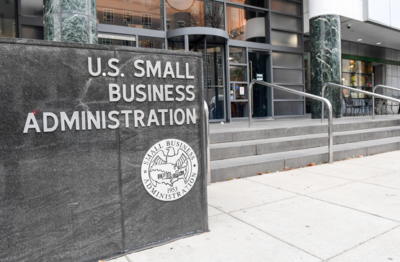
Commerce Department builds out supply chain resilience in 2022 budget
The Biden administration’s 2022 budget request raises the bar for federal contracts going to small, disadvantaged businesses and sets higher budgets for agency...
The Biden administration’s 2022 budget request raises the bar for federal contracts going to small, disadvantaged businesses and sets higher budgets for agency research and development spending across the board.
It would also raise the Commerce Department’s budget by nearly a third, with a focus on building on supply chain security for IT and emerging technology like 5G — a plan that dovetails with the president’s $2 trillion infrastructure, but offers a separate stream of money.
These are just a few of the priority areas outlined in the White House’s 2022 discretionary budget request, which sets discretionary spending 16% above current levels.
Administration officials said in a call with reporters Friday that the FY 2022 spending proposal offers separate but “complementary” spending priorities to President Joe Biden’s infrastructure plan, but would all be tied together when the administration releases the full budget request in the coming months.
“They are different processes we expect Congress to undertake, but you will see them all pull together when we release the full budget,” an administration official said.
More contracts for Small Disadvantaged Businesses
The spending plan gives the Small Business Administration an $852 million budget in fiscal 2022 — a 9.4% increase from current levels.
The increase would staff up SBA’s government contracting programs to reach the Biden administration’s goal of awarding 15% of federal contracts to Small Disadvantaged Businesses (SDB) by 2025.
Agencies, in terms of overall contract spending, have easily met the Small Disadvantaged Businesses contracting goal set by SBA. Its latest Small Business Procurement Scorecard shows more than 10% of federal contract spending went to Small Disadvantaged Businesses in fiscal 2019, far exceeding a 5% goal.
The latest scorecard also showed governmentwide progress in hitting other hard-to-reach set-aside contract goals, even before Congress approved trillions in COVID-19 spending.
“Setting aside a larger share of contracts for SDBs would significantly expand the number of opportunities for small businesses owned by individuals who are socially and economically disadvantaged,” the budget document states.
The budget request also gives SBA $30 million — more than double its previous levels — to build up its innovation and startup-focused programs, including the Small Business Innovation Research and Small Business Technology Transfer programs.
“These increases would enable SBA to expand the geographic and demographic reach of the innovation programs, enhance outreach and training efforts, support the development of innovation hubs across the nation, and help ensure America’s small businesses stay at the cutting edge of innovation,” the document reads.
Commerce Dept. builds out supply chain resilience
As part of the president’s nearly 28% increase in spending for the Commerce Department, the spending plan would more than double the National Institute of Standards and Technology’s spending on manufacturing programs, with a focus on strengthening the country’s industrial base for IT components.
The plan gives NIST $150 million to fund two new Manufacturing Innovation Institutes (MIIs), aimed at making the U.S. a global leader in the design and manufacture of semiconductors.
As a follow-up to this budget item, National Security Advisor Jake Sullivan and National Economic Council Director Brian Deese and Commerce Secretary Gina Raimondo will host a virtual summit Monday on semiconductor and supply chain resilience.
The summit, according to White House reports, will focus on steps to strengthen the resilience of American supply chains for semiconductors and other key areas.
The MIIs that NIST will stand would complement similar institutes launched by the Defense and Energy Departments.
NIST would also receive $916 million to expand its scientific and technological research on everything from cybersecurity, artificial intelligence, quantum information science and advanced manufacturing. This funding would also support prize competitions to pursue key technology goals. Spending on these prize competitions has increased significantly since 2010.
The boost in Commerce spending would give the National Telecommunications and Information Administration $39 million for advanced communications research, which would support the development and deployment of broadband and 5G technologies by identifying innovative approaches to spectrum sharing.
Federal R&D spending in focus
The budget also increases the Department of Homeland Security’s R&D capabilities. It outlines $599 million in national security-focused research in cybersecurity, data analytics, transportation security and climate resilience.
The Biden administration said its budget request will also support research within the Defense Department, but doesn’t specify how much spending it would receive for these programs. DoD more generally would receive $715 billion in discretionary spending under the budget proposal, a 1.6% increase from current discretionary levels.
“The discretionary request prioritizes defense research, development, test, and evaluation funding to invest in breakthrough technologies that would drive innovation and underpin the development of next-generation defense capabilities,” the plan states.
The Science Coalition, a nonprofit representing 50 of the top public and private research universities in the U.S., said the budget plan “prioritizes America’s science enterprise by requesting historic increases for key federal research agencies.”
“Federal investments at these levels would ensure America’s 560,000 strong research workforce — especially those researchers disproportionately impacted by the pandemic, such as women and minorities — can continue to spur innovation, push the boundaries of technology, and keep the United States a global scientific and technological leader,” John Latini, The Science Coalition’s president, said in a statement.
State Dept. fights pandemics, climate change
The State Department and USAID would get a $58.4 billion budget — a 10% increase from current levels — to staff up and create new centers of climate expertise.
The agencies would also receive $10 billion for global health programs, with $1 billion targeted toward global health security and pandemic response.
“This additional $1 billion would expand Global Health Security Agenda capacity-building programs to additional nations and increase investments in cross-cutting research and viral discovery program to detect and stamp out future infectious disease outbreaks before they become pandemics,” the budget document states.
The State Department, in a press release following the budget rollout, said the discretionary request would also increase the size of the Foreign Service and Civil Service, and would “deepen our expertise and expand diversity so that we have the workforce we need to advance U.S. interests and effectively counter threats.”
“Continued investment in technology and training will enable our workforce to fully realize their global potential,” the release states.
Secretary of State Antony Blinken, in his first major foreign policy speech last month, previewed the Biden administration’s plans to invest in tools to predict and prevent future pandemics, and “a firm global commitment to share accurate and timely information so that a crisis like this never happens again.”
Copyright © 2025 Federal News Network. All rights reserved. This website is not intended for users located within the European Economic Area.
Jory Heckman is a reporter at Federal News Network covering U.S. Postal Service, IRS, big data and technology issues.
Follow @jheckmanWFED
Related Stories





